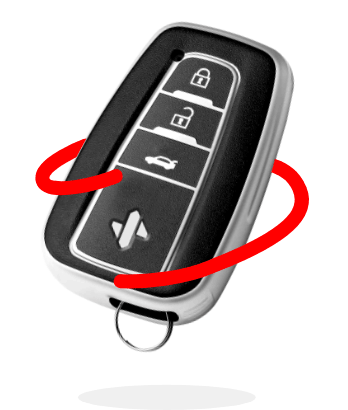Whether you’re buying a used vehicle or searching for car insurance, there’s no doubt you’ve considered mileage.
Low mileage inevitably means less wear and tear on a vehicle, a better quality ride, and can even be positive for your car insurance premium.
But what’s considered “low” vehicle mileage? And how do you save money on car insurance with low mileage?
If you’re interested in learning more about the effects of low car mileage, keep reading. We’ll discuss what it is, how it works, and why it may be a good option for you.
BUYING A VEHICLE WITH LOW MILEAGE
If you’re considering purchasing a pre-owned or used vehicle, you’re likely looking at the mileage.
Unfortunately, there are no tried and true rules when it comes to vehicle mileage. Why? The numbers can be misleading. In some cases, a vehicle driven too little could be just as problematic as a vehicle with too many miles.
So what’s your best bet? Use the mileage in conjunction with other vehicle data and to determine whether it’s worth buying based on your unique needs.
Balance age and mileage
What’s one of the best reasons to consider the vehicle’s mileage? To determine how it aligns with the car’s age.
On average, vehicles are driven approximately 12,000 miles per year. Using that data, you can do some basic math based on the year and mileage of the car to determine whether the mileage is about right.
For instance, a 5-year old vehicle with 60,000 miles would be the average. If you find a 5-year old vehicle with 12,000 or 120,000 miles, you might want to start asking some more questions about the car and its history.
Balance appearance and mileage
Another indicator of low mileage is that the vehicle should theoretically show less visible wear and tear than a vehicle with high mileage.
Take a close look at both the interior and exterior of the vehicle: does it have a number of dents, scratches, or signs of wear?
What if the mileage seems too low?
If the odometer reading is accurate and the vehicle’s mileage seems significantly lower than the average number that it should have, it doesn’t mean that you shouldn’t buy it.
There are plenty of vehicle owners who may use their cars very little: older drivers who don’t get out much, vacation vehicles used at a second home, and so on. Understanding more about the previous owner may paint a clearer picture about why the mileage was so low.
Mileage that seems too low shouldn’t result in passing up a vehicle altogether, but it would be wise to take some extra steps. Ask either the dealership or your own mechanic to do an additional check on the car to ensure nothing needs repair or replacement. (A vehicle that sits too long without being driven could potentially have mechanical or electrical issues.)
What if the mileage seems too high?
Since modern vehicles can be driven up to about 200,000 miles, there are plenty of older vehicles with high mileage that are in great condition and have plenty of miles left in them.
Consider what you need the vehicle for: is it going to be your main mode of transportation for commuting every day? Or will it be the first car for your teenage driver?
Also, think about how long you plan to have the vehicle for. Do you need it for just a few years or do you plan to drive it until it can’t drive anymore?
While you won’t see car insurance premium savings from a vehicle with high mileage, you’ll likely save quite a bit on the purchase of the vehicle. After all, cars with more mileage (and likely age) have often already had a flattened depreciation curve.
LOW MILEAGE DRIVERS CAN SAVE ON INSURANCE
If you’re a car owner looking for ways to save on your car insurance, you may be interested in learning about low mileage car insurance.
Low mileage car insurance is a particular type of coverage designed for drivers who do not drive their cars often. This type of coverage can save you money on your car insurance premium, and it is an excellent option for drivers who only use their vehicles occasionally.
Why does more mileage mean higher insurance?
High-mileage drivers often face higher insurance premiums due to the perceived increased risk of accidents and claims associated with more time on the road. That’s why many low mileage drivers can find discounts on car insurance, but may need to be proactive or look beyond traditional policies.
Low mileage discounts
Some insurers now offer specialized low mileage car insurance options, and will consider the average trips driven, the number of annual miles driven, and driving behavior.
Other providers offer low mileage discounts based on telematics or GPS technology, which allows them to track a driver's actual mileage. With increasing options and opportunities available for low mileage drivers, anyone who spends less time behind the wheel may be able to find cheaper car insurance quotes.
LOW MILEAGE AUTO INSURANCE OPTIONS
A number of insurance carriers offer drivers low mileage savings. They each use their own methods for determining savings and these are the most common types: pay-per-mile, telematics, or a company-specific (or proprietary) program.
1. Pay-per-mile or Usage-Based Insurance (UBI)
Using this program, charges are based on actual mileage driven rather than the typical flat rate. By relying on telematics technology to monitor driving behavior, usage-based insurance providers can effectively assess the risk of low mileage drivers.
Ultimately, pay-per-mile car insurance provides low mileage drivers with an affordable solution for staying fully covered and protected on the road.
2. Telematics
Telematics insurance programs are becoming increasingly popular among drivers who lead low mileage lifestyles.
By monitoring things like mileage and driving behavior, these programs can help to provide lower rates for safe and responsible drivers. Many insurers now offer these low mileage insurance options, using an app on your phone or a plug-in device to track your driving activity.
3. Company-Specific or Proprietary Program
Most auto insurance companies now have their own variation of low mileage insurance. If you feel like you may fall in this category, it's a great idea to ask your agent about these options to learn about the carrier’s unique program.
DO YOU QUALIFY AS A LOW MILEAGE DRIVER?
As most insurance providers know, low mileage drivers are often considered a low risk for accidents and claims.
The majority of low mileage drivers tend to drive fewer than 7,500 miles per year, although there is no specific threshold that determines whether someone is classified as low mileage or not.
Low mileage drivers are rated by default at the standard U.S. average mileage of 12,000 miles per year when purchasing insurance coverage. However, many low mileage drivers may be able to take advantage of special low mileage discounts and benefits if they are willing to shop around and find an insurer.
Overall, low mileage drivers can save time and money by investing in a more suitable insurance policy designed specifically for their driving habits.
If you’re looking for a lower-cost option that still offers some protection in case of an accident, low mileage insurance might be right for you.
If you need help finding the best car insurance coverage (and low mileage discounts) for the best price, start by speaking to a SimplyIOA agent at 833.872.4467 or get an auto insurance quote online now.










